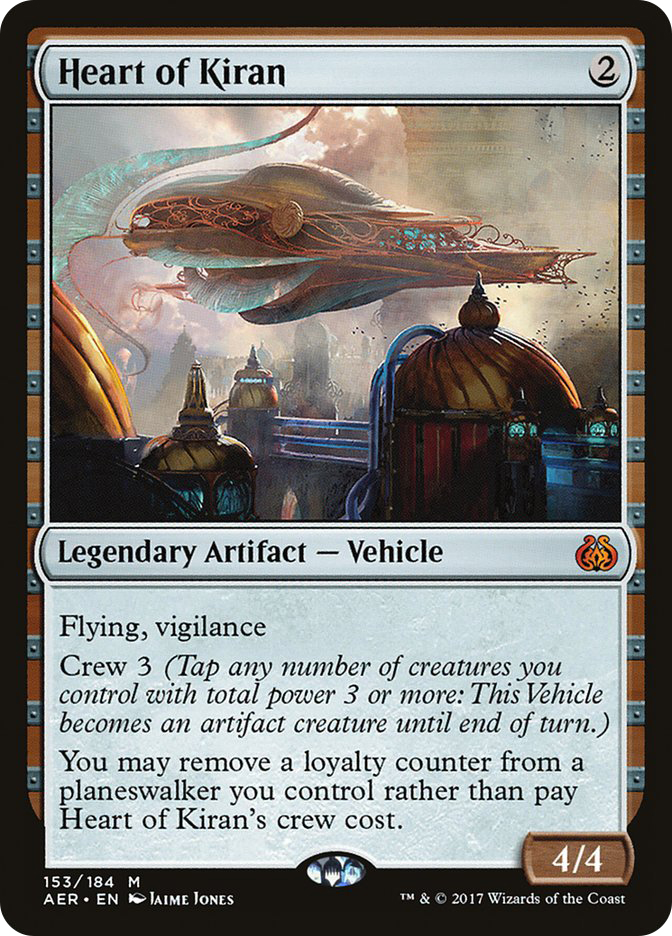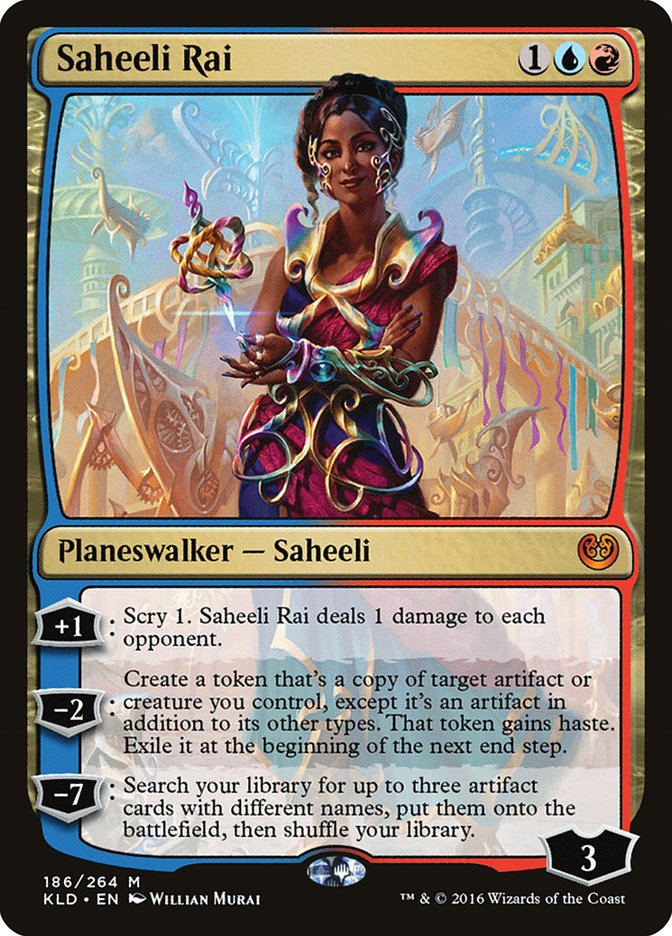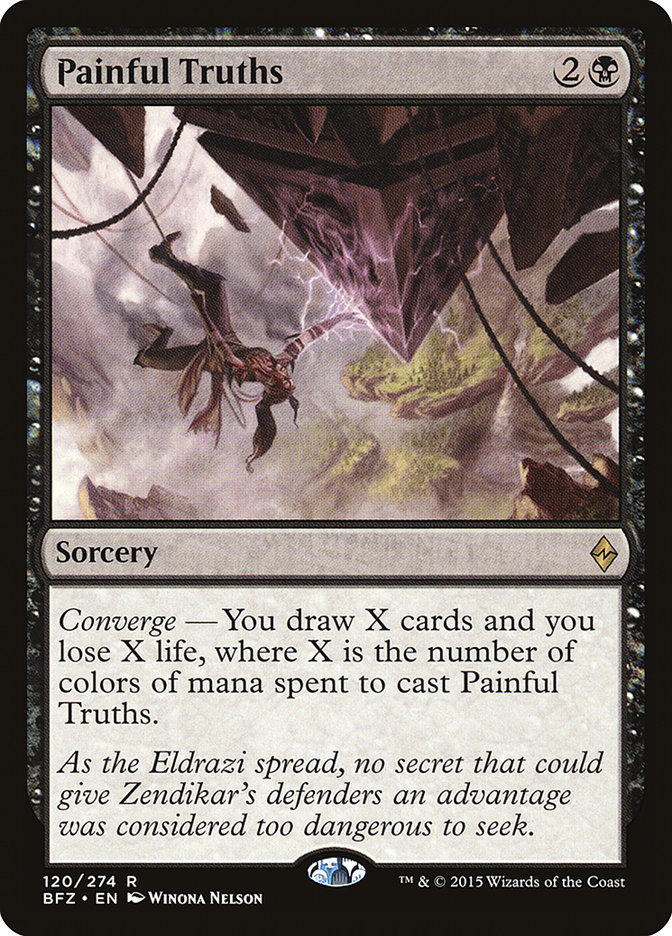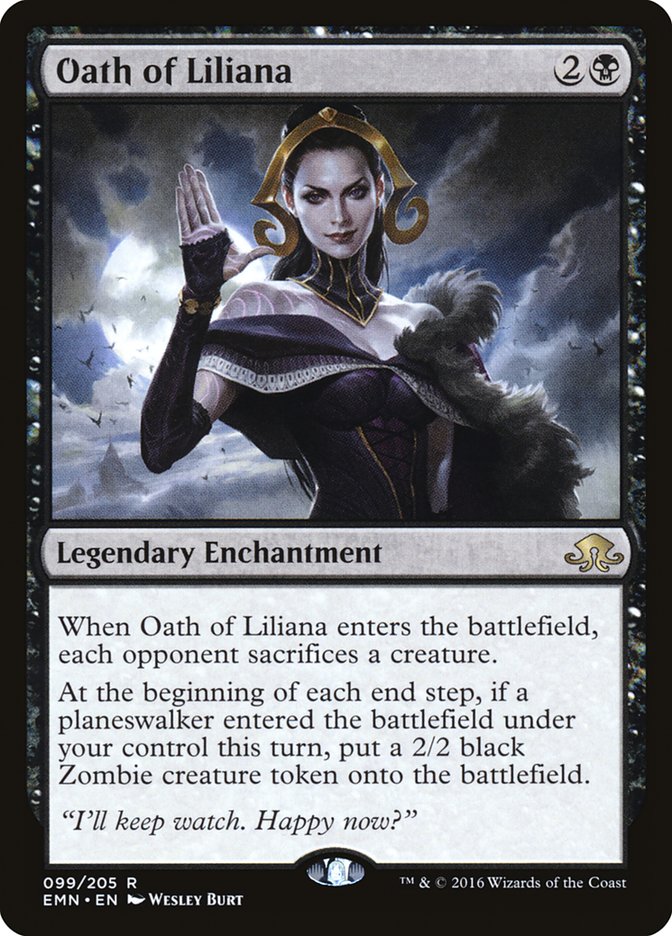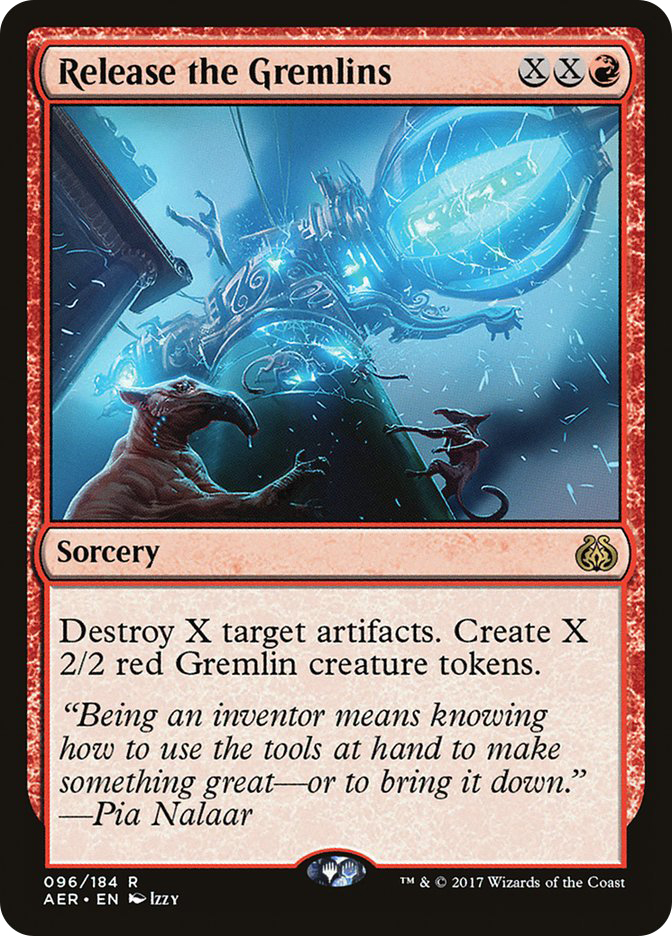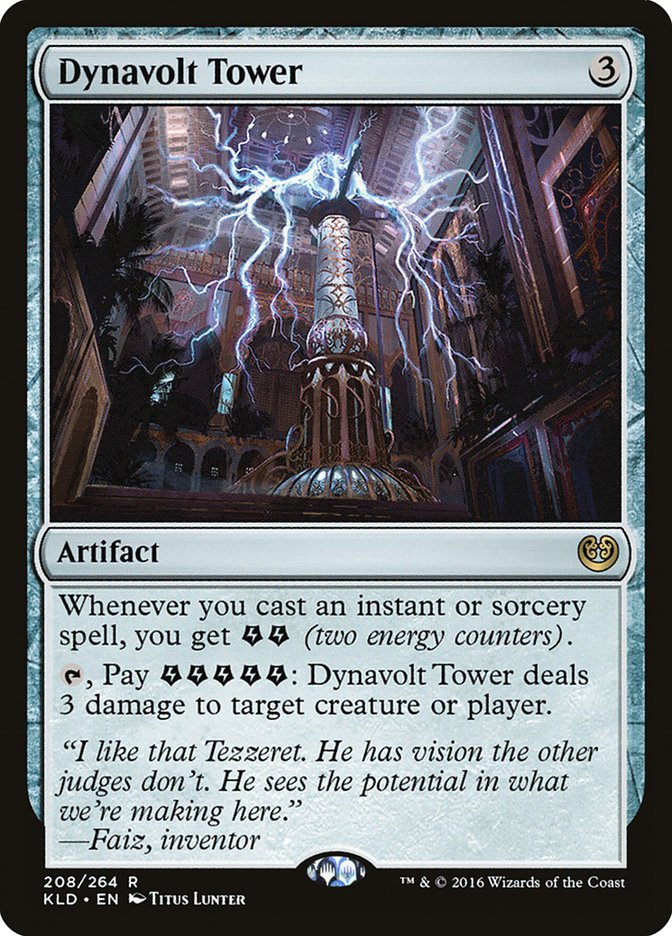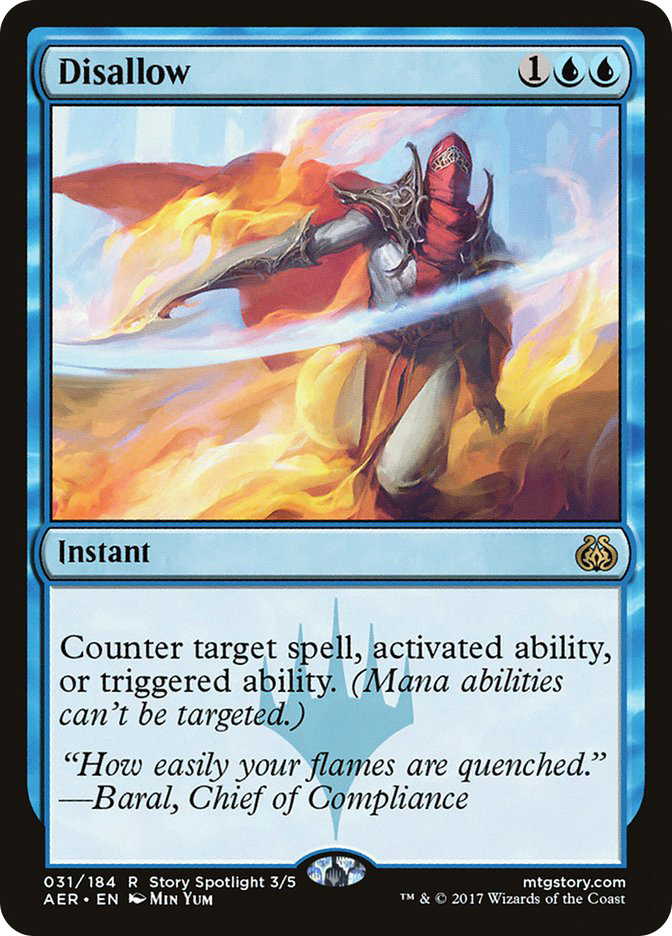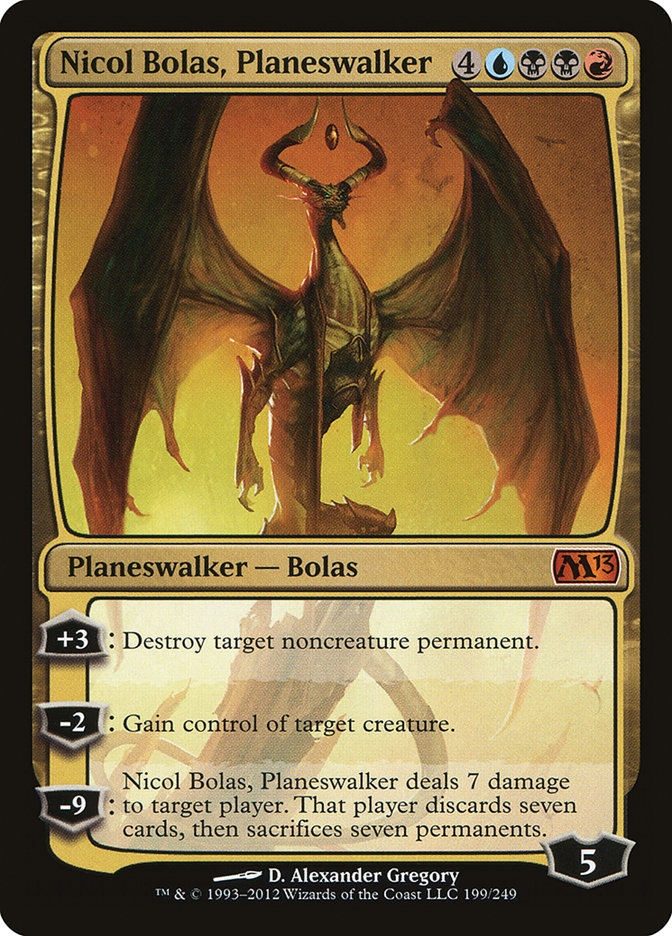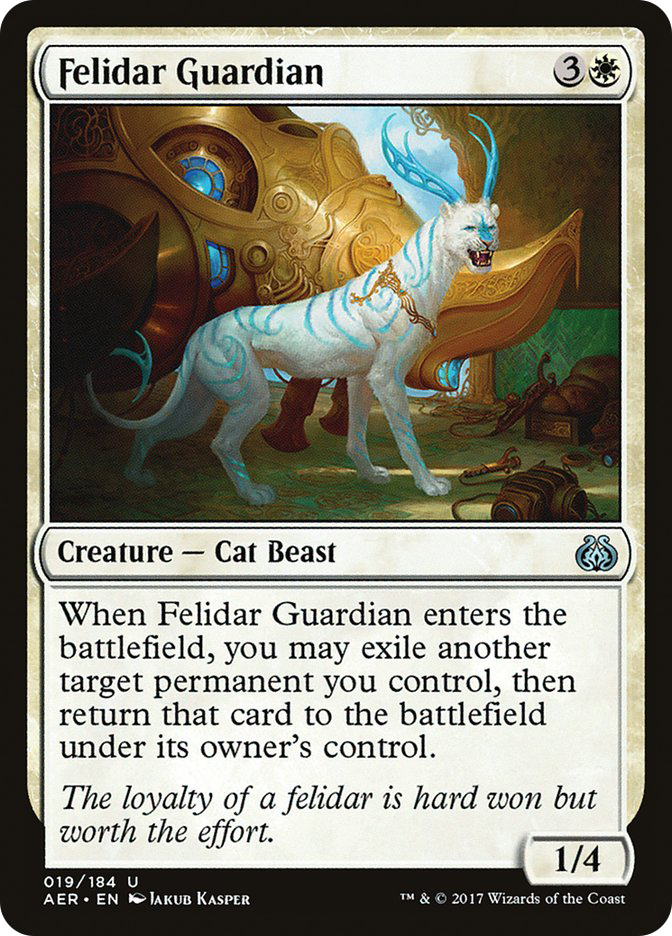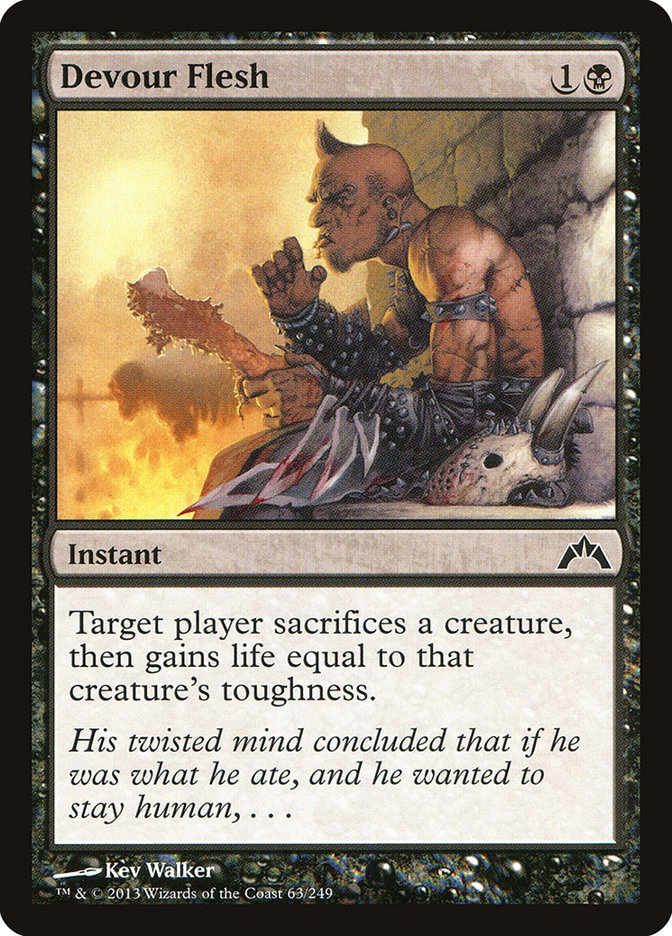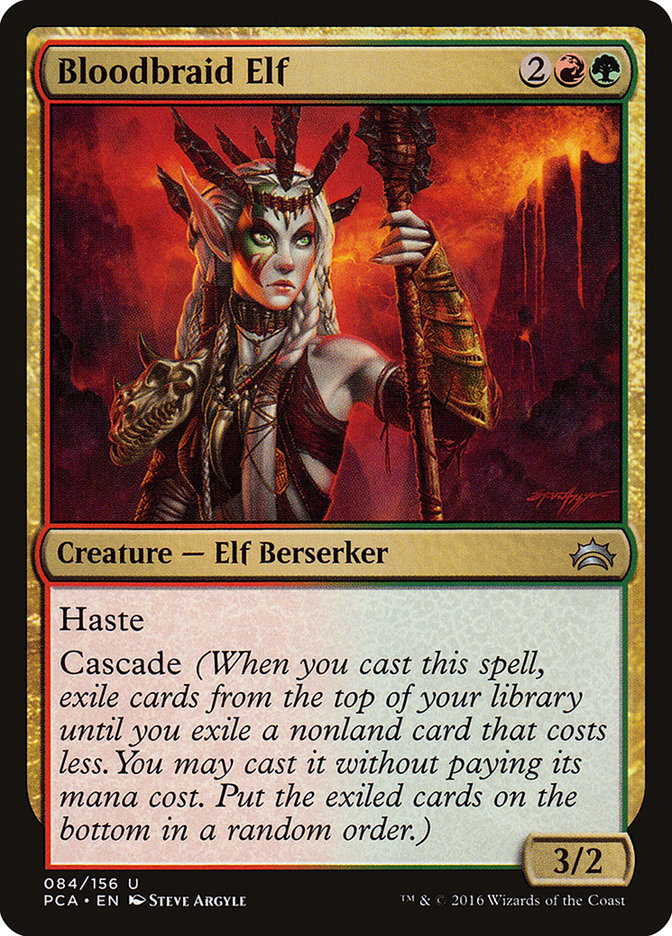Inspired by the Fact or Fiction series, I decided to have a debate about the merits of banning or unbanning cards in Standard and Modern at the moment. I didn’t have an opponent lined up, but honestly, I trust myself to argue both sides more than I’d trust most opponents, so here are my thoughts on issues on which I’m genuinely conflicted. I’m not playing a role in taking both sides, and I’m not intending to make statements just to argue that they were wrong later. I’m just going to offer my genuine opinions on both sides of these issues.
Point: WotC Should Have Banned Cards in Standard This Week
Standard is in a horrible place right now. There are two Tier 1 decks that are essentially the only decks doing well and a handful of fringe decks that people play because people will play fringe decks no matter how much worse they are than the best decks.
Mardu Vehicles is an overpowered deck that has it all. It has the best threats and the best answers. It can shift gears in sideboarding to fall more or less anywhere on the aggro-control spectrum. Gideon, Ally of Zendikar is a huge part of the problem. The fact that the planeswalker is an excellent top-end aggressive finisher while also being a perfect card in a midrange or control deck that has been the hardest card in Standard for control decks to beat contributes both to the difficulty of attacking Mardu as an aggro deck and offers it the flexibility to shift into a planeswalker control deck when that’s called for.
During the Pro Tour, the biggest problem with the deck was that teams couldn’t figure out how to build the sideboard because all the cards in the maindeck were so powerful that you never really wanted to change anything, and there weren’t enough strong, narrow answers to fill a sideboard.
Now that people have figured out that this open sideboard space can be filled with things like Painful Truths, Oath of Liliana, and additional planeswalkers, and that the deck can cut its early creatures and Vehicles and transform into Mardu Planeswalkers, it’s become considerably harder to attack, as cards like Release the Gremlins that could keep the Vehicles in check no longer line up the way they did.
Four-Color Saheeli similarly attacks from too many different angles to realistically target. Whirler Virtuoso with all the incidental energy generation gives the deck a token swarm to threaten and protect planeswalkers, while the deck uses planeswalkers and value creatures to fill the battlefield with bodies while drawing toward its combo. The combo of Saheeli Rai and Felidar Guardian is far beyond an appropriate power level for Standard as it’s a cheap (three-plus-four- or six-mana) combo that can win from an empty battlefield. If you have only an Oath of Nissa and lands on the battlefield, your opponent has to worry that you’ll just kill them, even if you don’t have any cards in your hand.
Unlike almost all other two-card combos, both cards are completely serviceable Magic cards on their own. Sure, they’re not Standard powerhouses, but because of the existence of the combo, either being on the battlefield is a considerable threat by itself, which means that either one can usually draw a card when it enters the battlefield, and then your opponent has to treat it as a “must-answer” threat most of the time. The deck gets further value out of the combo’s mere existence because, since it can win with haste, the opponent always has to leave mana open to interact with it once you can threaten it, so you just get to spend more mana every turn than your opponent unless they have a lot of instants in their deck or they’re willing to risk immediately losing the game.
On top of its raw power, it’s just a miserable deck to have around. The combo has exactly the same issue that lead to
Counterpoint
I’m not going to deny any of the claims above. If I didn’t believe them, I wouldn’t have suggested them in the first place. However, despite those points, inaction may be our best option for the following reasons:
First: Standard isn’t that bad. Yes, there are two best decks, but almost every Standard has one to three decks that form a clear “Tier 1,” and it’s not clear that that’s bad. People who play infrequently but competitively actually like to be able to pick up a deck and know they’re have a chance of winning the tournament because they’re playing a great deck. It means they can show up and compete and not have to stress too much about deck selection.
Meanwhile, people who enjoy building decks have clear targets. Yes, the targets in this case are extremely difficult to target, but that kind of just makes it an interesting puzzle. For many players, if they aren’t the type who are willing to just pick up a Tier 1 deck, they might not need to win to have a good time at the tournament; maybe they’ve found something that they think is great against one of the two best decks, and as long as they get to show that they found an answer to that deck and give some poor opponent an unexpected beating, that will make their day. This dynamic is fairly healthy for Standard.
Moreover, the two decks we have are at least both interesting and skill-testing to play with and against. Both have tons of play, counterplay, flexibility, and more or less whatever you could want. This is why they’re so dominant. Also, we’re kind of in a sweet spot where both decks are so intricate that the best players can always find unusual lines and navigate their way through a series on interesting decisions, but also so powerful that anyone can pick up either deck and crush their opponents with a string of slightly above-average (or even average) draws.
Finally, it’s not really fair to dismiss the rest of the field. Yes, the Top 8 of both GPs last weekend featured fifteen copies of those two decks, but the experience playing in the tournament wasn’t that narrow. Throughout the day I was watching matches next to me and playing against a wide variety of decks: G/B, Dynavolt Tower, Zombie Emerge, Four-Color Energy Aggro, Esper Control, Aetherworks Marvel. While each of these decks may ultimately have too many weaknesses to win the tournament, it’s not like the matches against them are comically easy blowouts. These decks all do scary, impressive things that definitely threaten to beat either Tier 1 deck.
Even if, despite all that, you think Standard isn’t great right now, banning cards in Standard comes with a huge cost and has an extremely high burden of proof, and needs to be maintained as a desperation measure only. Banning cards again immediately after banning three cards while failing to fix anything sends a message that would shake consumer confidence for years to come, and toward what end? What are you going to ban that would fix this format? If you ban half of the Saheeli combo, how confident are you that Mardu wouldn’t just become the only deck? If you ban Heart of Kiran or Gideon, Ally of Zendikar on top of it, you have to worry that we’ll just return to the point when the format was all B/G mirrors. How far are you willing to go, and how confident are you that the end result is desirable?
Honestly, this is also just a really weird time to schedule another Banned and Restricted announcement. Why go through all that when you can just wait for Amonkhet to fix things? (Here I need to offer a counterpoint: if the Saheeli combo is too stupid to exist in Standard, which I think it is, why wait? There’s no advantage to banning it when Amonkhet comes out because then we still haven’t seen if Amonkhet with fix anything, and do you really want everyone reading every card previewed in Amonkhet and thinking, “Will this beat the combo? No? Not interested.”? It would be one thing if I thought Amonkhet would have great answers to it, but that would kind of require that it was all planned all along, and I believe the combo was an oversight in the first place, which I think would mean that there wouldn’t be time for them to have planted a counter in Amonkhet.)
Here’s an “outside of the box” argument that kind of ignores the spirit of the question: nothing should be changed now because this isn’t when the announcement should be scheduled. In fact, no part of the scheduling of Banned and Restricted change announcements makes any sense. We shouldn’t have them twice per set because it just creates more moments when people have to worry about their cards suddenly losing value. Two per set is so common that you might as well not have a schedule at all; just make announcements as needed. At least that way, there wouldn’t be specific dates leading to market fluctuations.
I don’t think that’s a good solution. I think there should be one specific date per set, but I think that they were right to create a date after we’ve seen the format play. Why schedule the announcement right as we’re getting new cards? That’s the worst time to change things, because the new cards might have fixing things anyway, but we’ll never get to know. Yes, getting rid of old oppressive things does give new cards more chance to shine, but they still get that if you wait a month and then ban the old oppressive things. The one announcement per set should happen around three weeks after the Pro Tour, when we’ve seen what a format looks like after pros have worked on it and the community has responded both in the GP the following week, and the weeks after on Magic Online.
Point: The Modern Banned and Restricted List Should Be Updated
I think Modern is fairly clearly and objectively in roughly the best place it’s ever been. Yes, it’s possible that Death’s Shadow will prove to be oppressive, but honestly, it doesn’t seem that likely. There are a lot of weird removal spells that happen to be great against it, like Blessed Alliance, Condemn, and Devour Flesh, that don’t see a lot of play but easily could, and the deck has a real weakness to Rest in Peace and other graveyard hate on top of that.
Despite this, the Banned and Restricted list has some legacy decisions that just don’t make a lot of sense. Bloodbraid Elf likely never should have been banned; it took a bullet that was intended for Deathrite Shaman before they figured out what the real problem with the deck was.
Jace, the Mind Sculptor was banned when the format was created because it was shortly after its ban in Standard when they were worried about creating a format that was just “all the Standard decks you didn’t want to play against.” When Jace was first printed, it wasn’t that big of a problem in Standard because cards like Bloodbraid Elf, Blightning, and Lightning Bolt kept it in check. It was only after rotation that it became a huge problem. The large card pool in Modern can handle Jace, and the format is big enough that there’s really no risk of Modern decks resembling old Standard decks, and that format happened so long ago that it wouldn’t even really be a problem if it did (which, again, it couldn’t, because Stoneforge Mystic is still banned, which I believe it should be).
I’ve heard concerns that every blue or control deck would just become a Jace deck if it were legal. This both isn’t true and isn’t problematic. The conditions for playing Jace in Modern are actually fairly narrow. Yes, you can define a very specific kind of blue control deck that wants this kind of card, but at the point where you’re doing that, I feel like you’re basically saying “every Jace deck would be a Jace deck.”
Also, there’s a good chance that a lot of decks would want to play one or two copies of Jace, but I really don’t see how that’s a problem. Even if it’s better than I think, and it turned out that most decks that could easily cast it played four, it would be far from the first card in Modern that shows up in 80+% of decks that can cast it. As long as the play patterns around it aren’t horrible, this is fine. I think play patterns around Jace are only problematic when planeswalkers are too hard to kill or when bouncing a creature is too hard to beat. There are very few creatures that see play in Modern that cost more than two mana and don’t do something great when they enter the battlefield, which means Jace’s bounce ability just isn’t that oppressive, and there are enough cheap, high-powered creatures to easily threaten Jace as a planeswalker in combat, on top of decent direct answers to it like Lightning Bolt if it doesn’t +2 and Maelstrom Pulse or Hero’s Downfall regardless (which don’t see a lot of play, but could if Jace became an issue).
I’m actually not in favor of banning anything at the moment. There’s the same argument as always for Simian Spirit Guide, that no one ever used it to do anything fair, but I think the main thing it’s doing for the format right now is allowing Ad Nauseam to exist, and I don’t think that makes the format worse. As always, I’d keep a close eye on Mox Opal, and I’d add Street Wraith to the list of cards that might need to go at any moment, but for now, I’d rather ride it out.
Counterpoint
First, there’s the “if it ain’t broke” rule: Modern’s in a great place right now, so why change anything? Even if there are cards we could safely unban, there’s some value to keeping those in the chamber as a way to shake up the format later on if it’s needed. We don’t ban cards to create that opportunity because there’s a high cost to banning them in the first place, but it’s nice to have a few single, powerful cards that we have the option of injecting into the format at the right time once we’ve paid that cost. Essentially, unbanning a card like Jace, the Mind Sculptor could create enthusiasm for a stale format at some point in the future, and the format just doesn’t need that boost right now.
Further, Bloodbraid Elf was banned for making Jund too good. Do you really want to add it back to a format when Jund variant Death’s Shadow is the best deck? Bloodbraid Elf is outside the curve in Death’s Shadow, but only barely, which is to say, it’s a fantastic bullet for Traverse the Ulvenwald and easily accomplishes what Lingering Souls does in the sideboard without adding a color. Imagine trying to play an attrition game against Death’s Shadow when they have four Traverse the Ulvenwalds and four Bloodbraids, and those Bloodbraids can find Traverse; Liliiana, the Last Hope; or Kolaghan’s Command to get another Bloodbraid Elf, generating other value and keeping the chain going. That actually sounds so nightmarish that I’ve talked myself around into thinking we probably just can’t unban Bloodbraid Elf.
Verdicts
So I did end up disagreeing with one of my claims there with Bloodbraid Elf, but that wasn’t how I planned it; I just talked myself into it by really working through it when I’d previously though Bloodbraid Elf probably shouldn’t be banned. While I think both sides of both of these points have merits, I can also imagine what I’d do if I were in WotC’s shoes and had to be the one making decisions:
I’d reschedule the announcements, as discussed above, and I’d ban Felidar Guardian in Standard. Gideon, Ally of Zendikar is the most powerful card in Standard, but the bar to ban a card just for being powerful is and should be extremely high. Gideon’s great, but it allows people to play Magic, and it’s not a card we consistently see 32 copies of in Top 8s or anything, so I’d ride it out as long as possible. Felidar Guardian is a bigger mistake. That kind of combo just isn’t what Standard should be about. It was an oversight that should be corrected at the first opportunity so that we can get back to playing real games of Magic.
As for Modern, If Jace were a slightly less expensive card, I might unban it now, but the prices it could climb to if it ended up being popular are genuinely scary, and I think there’s real legitimacy to keeping it around as an option for when the format needs it, rather than doing it while things are good. I’d also ban something from Death’s Shadow (any of Death’s Shadow, Traverse the Ulvenwald, and Street Wraith are on the table) if it stays clearly ahead of the rest of the decks in Modern for another few months, but I really don’t expect that to happen (though I do still expect it to be among the top-performing decks, just not problematically dominant).


